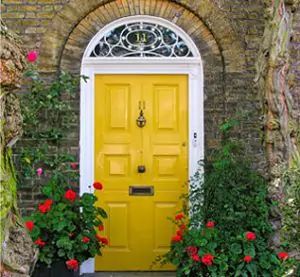 Trim color, especially for interiors, often defaults to a generic "white". Color consultant Diane Stewart with Color Sense Consulting explains very clearly why there's more to it than meets the eye.
Trim color, especially for interiors, often defaults to a generic "white". Color consultant Diane Stewart with Color Sense Consulting explains very clearly why there's more to it than meets the eye.
"Trim is often an afterthought, but it should be the right color to complement the walls. Trim is sort of like the black outline around illustrations, or piping on a fabric. It should highlight and accent the main attraction in the middle, but it’s not meant to draw attention to itself. Unfortunately, that’s just what bright white trim does. I’m not sure why this became popular, but I try to steer my clients away from it as much as possible.
"Before picking out trim color, check out the fixed surfaces such as wood or stone floors. Then, choose the paint for the walls. These factors guide the choice of (usually) some kind of “white” for the trim. For example, a wall color with a yellow undertone looks better with creamy trim to complement the undertones.
"Most of the time, I specify a lighter color than the walls. That’s because trim goes up over our heads. Darker colors are perceived as heavier, so no one wants something “heavy” hanging over their head. Another issue is how much the contrast between the walls and trim should be. Some people want a bright, crisp line no matter what. But most people are amenable to a softer, less strident contrast.
"Personally, I prefer softer contrasts since I feel it’s more comfortable to live with. I don’t want my eye drawn to the outline, I want to see what’s in the middle. And I don’t want to look at sharp edges. Sometimes, I like to paint the walls and trim the same color, but in different sheens. This works well in small rooms with lots of windows and doors. If all the trim were outlined, it would look really busy like a mosaic. When it’s all the same, the room looks bigger, and is much calmer."


